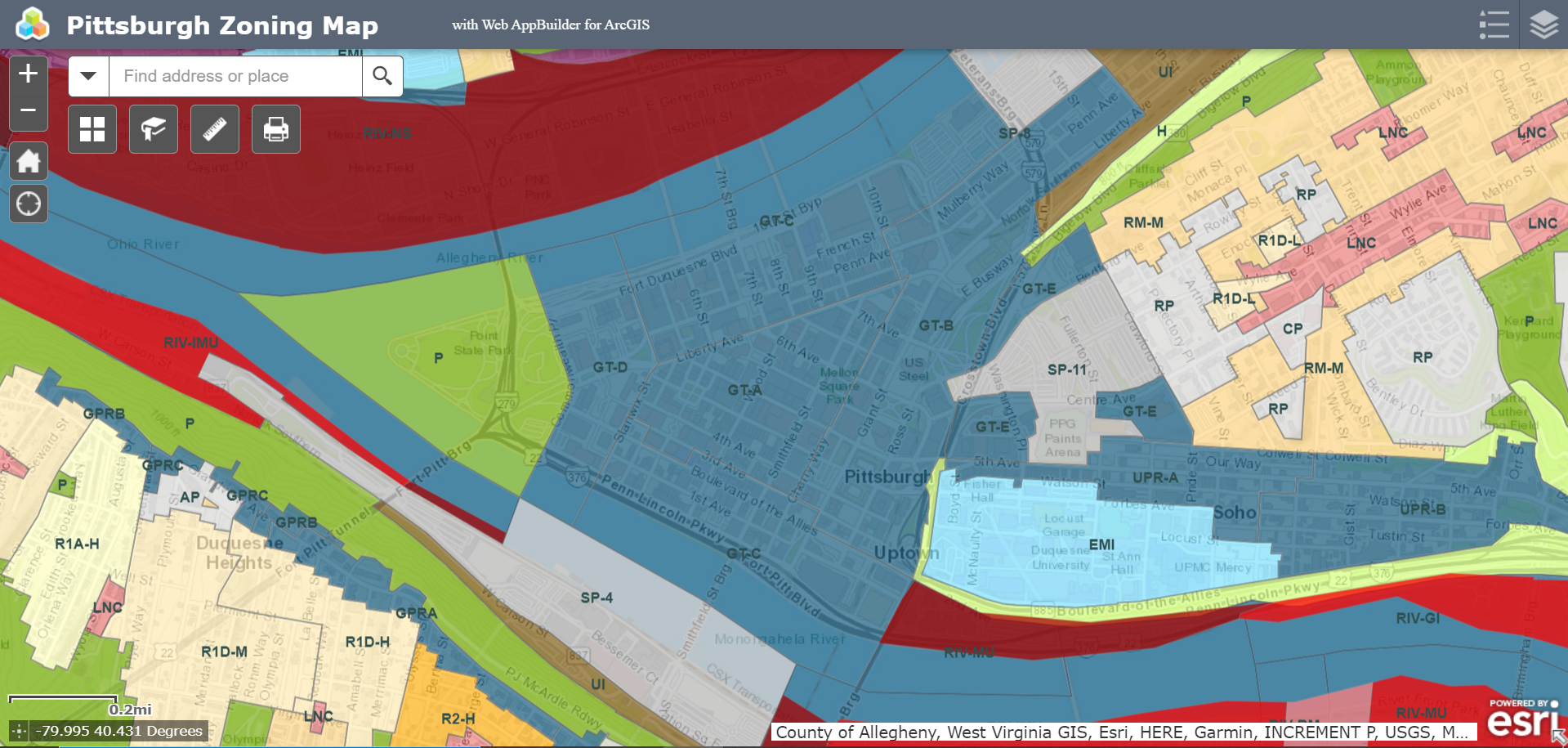Pittsburgh Zoning Districts - GT-C Overview
By Kathleen Oldrey
Introduction
Zoning districts are a fundamental building block of zoning regulations and set the base use, height, and density standards for the area they cover. In some cases, the district also sets the required level of zoning review. Pittsburgh has over 50 distinct mapped zoning districts. This series of guides is unpacking each of these districts.
In this post, we provide an overview of the GT-C (Golden Triangle Subdistrict C) zoning district. Additional posts dive into the density regulations for the GT-C and the use regulations for the full GT as well as provide overviews of the full GT and the other subdistricts: GT-A, GT-B, GT-D, and GT-E.
Refer to our Introduction to Pittsburgh’s Zoning Districts for the complete list of base zoning districts in the city. Pittsburgh’s interactive zoning map can be used to verify the project site’s zoning district.
Overview
The GT-C (Golden Triangle Subdistrict C) zoning district covers 0.31 square miles or 0.64% of Pittsburgh. The GT-C has two non-contiguous areas: one area that is roughly bounded by Stanwix Street, Liberty Avenue, 11th Street, and the Allegheny River, and one that is roughly bounded by Stanwix Street, Third Avenue, Municipal Center Drive, and the Monongahela River. As a whole, the GT-C subdistrict borders areas zoned RIV-MU, H, GT-B, GT-A, GT-D, and SP-8.
Challenges
Like the GT-A and GT-B subdistricts, the GT-C subdistrict is subject to the Project Development Plan review standards, open space requirements, and other requirements that apply to the entire GT district. The subdistrict’s purpose statement acknowledges the subdistrict’s riverfront location and prioritizes residential uses; as in the GT-B, there’s discussion of site characteristics and views as a factor in development.
Most but not all of the GT-C subdistrict is located within the Pittsburgh Downtown Partnership RCO area; in that RCO area, the RCO process is required where review by Planning Commission is required. Most of the GT-C subdistrict is within the downtown Parking Reduction zone, and part of the GT-C subdistrict is also located within the Penn-Liberty Historic District. Because of its riverfront location, the GT-C subdistrict has some areas that are within a floodplain. Small areas of the GT-C subdistrict are also within the Potential Steep Slopes Overlay Area.
Conclusion
As in the other GT subdistricts, development in the GT-C subdistrict may be subject to review by Planning Commission and may involve the RCO process. Depending on the location of the development site, floodplain and other environmental review provisions may also need to be met.

